[wysija_form id=”2″]
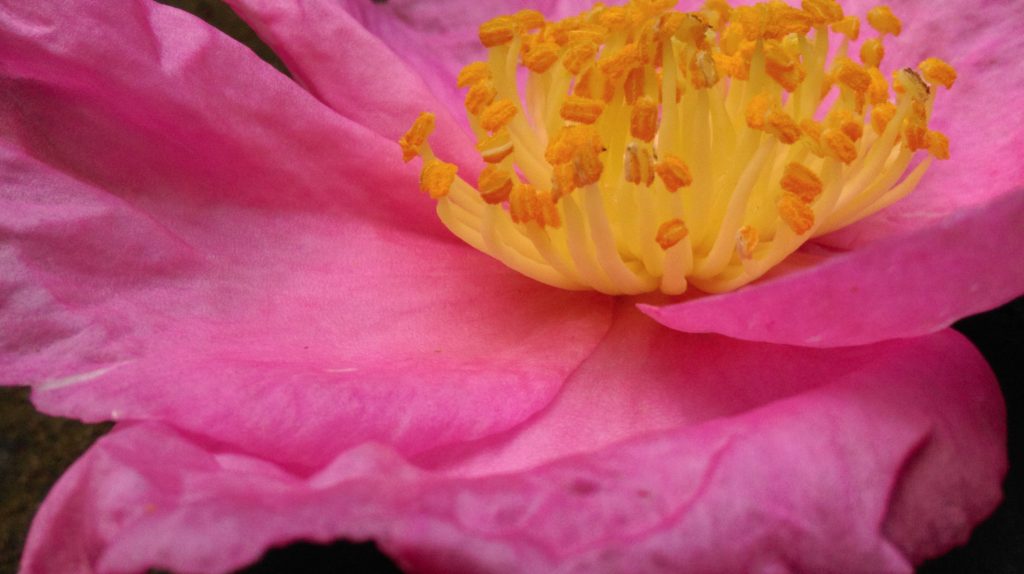
In our garden there are seven plantation pink sasanqua camellias along the back fence, five dark pink hiryu camellias down the side fences, and there is one prostrate hiryu which will eventually reach across the pond. We planted most of the plantation pinks over 25 years ago, telling ourselves that we’d prune them every year. These trees are now up to ten metres high, taller than the peppercorn tree, the Chinese pistache and the jacaranda which complete the canopy. Each has a trunk circumference of 60 centimetres.
One of the the camellias developed a drooping habit, arching forward, toward the north, and its shadow dapples the stream that runs under it. Close to the fence, though, the darkness of the camellia shade is forbidding. These are not pretty bushes but dominating trees. To walk there is, every day, to pull spider’s web from your face and clothing. It is this impenetrability that protects the micro-environment of the back garden. The camellias absorb most of the violence from the southerly storm winds; they force the scorching summer winds up and over the house. They guard the cool air and the mosses and ferns around the stream.
From the beginning of March till the end of May, camellia flowers cover the trees and the ground. Every year, they feed a new family of noisy miner birds. And every time I go into the backyard, they remind me to pause and lift my gaze. Yes: this is autumn.
I am particularly drawn to the stateliness of the plantation pink flowers. I love their delicacy against the toughness of the leaves, their pink against the dark green and black, the lightness of their petals changing with the weight of passing time. In particular, I am drawn to their drape. You can feel the petals’ folds, their shapeliness, even though what you see is the mysterious effect of sheen and shadow.
Andrew
P.S. Thanks you for reading this far. After this post, I am going to experiment for a time with posts every second day. I am not sure what timing is most appropriate. Any suggestions?
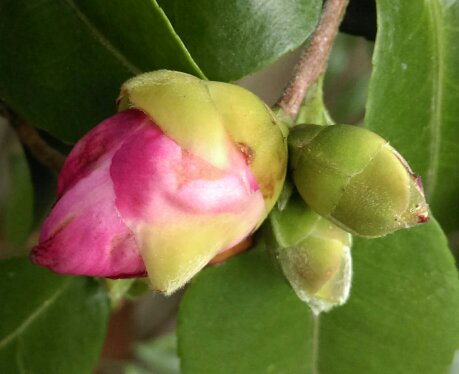
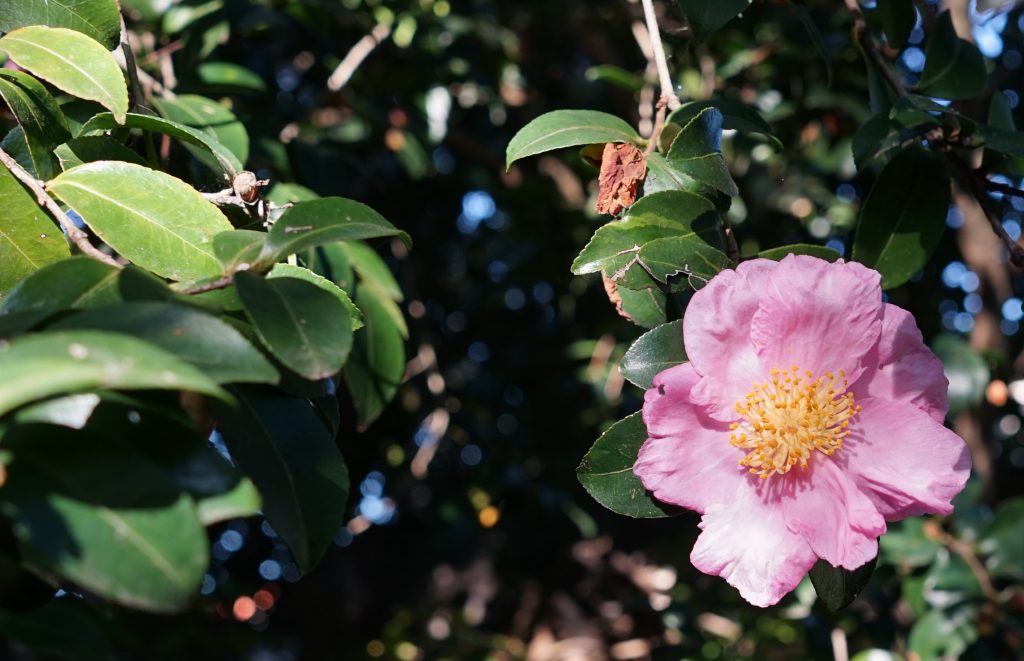
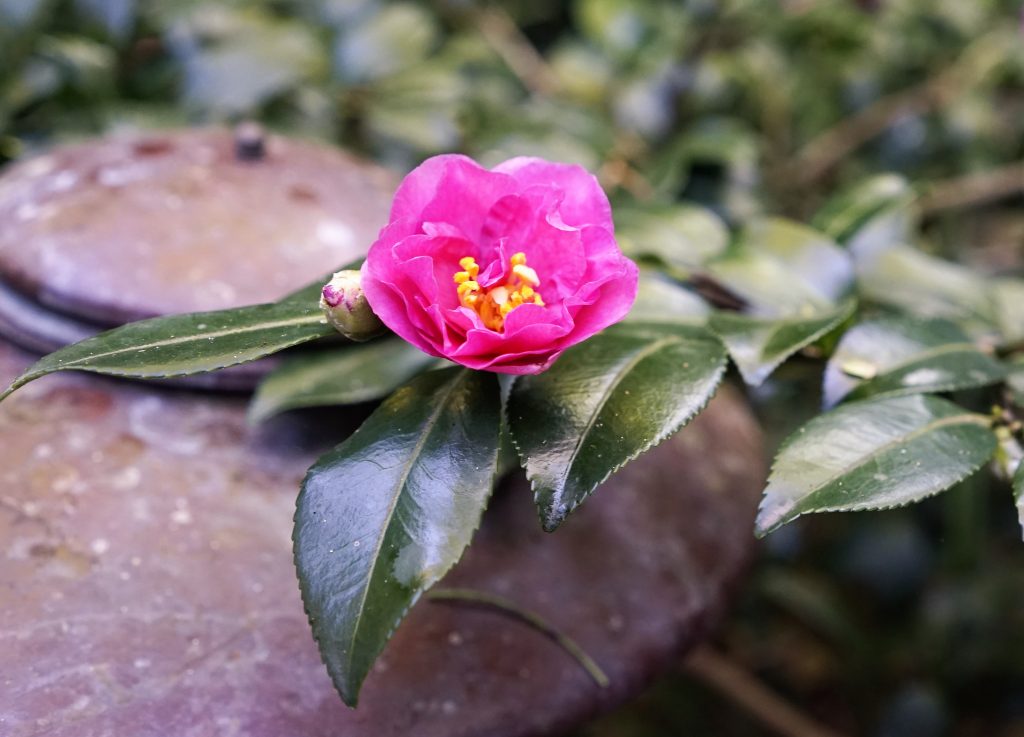
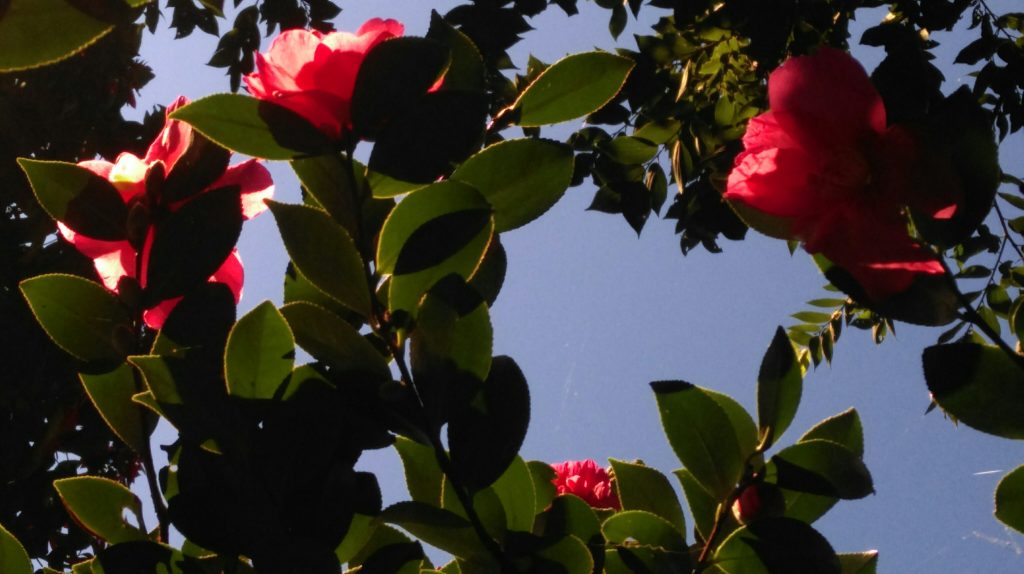
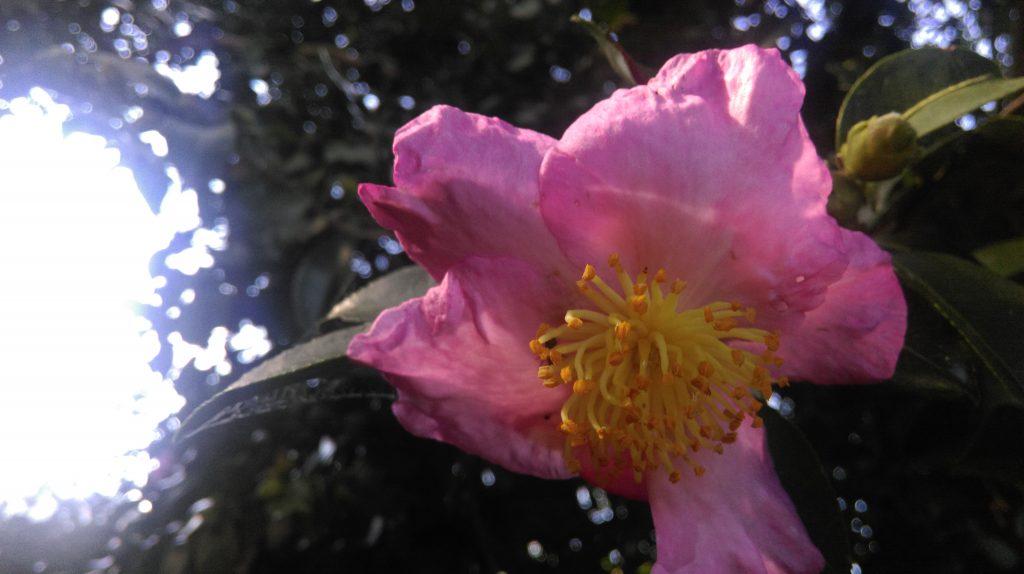
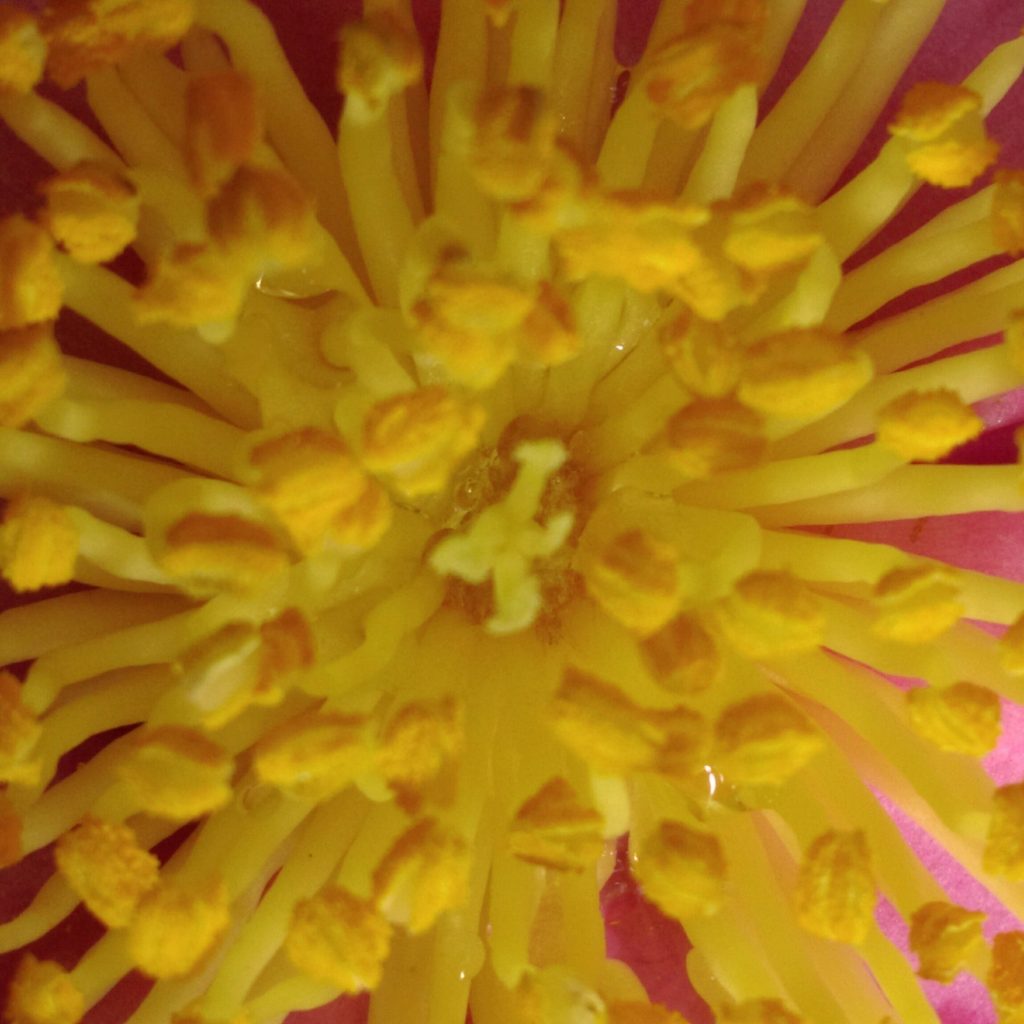
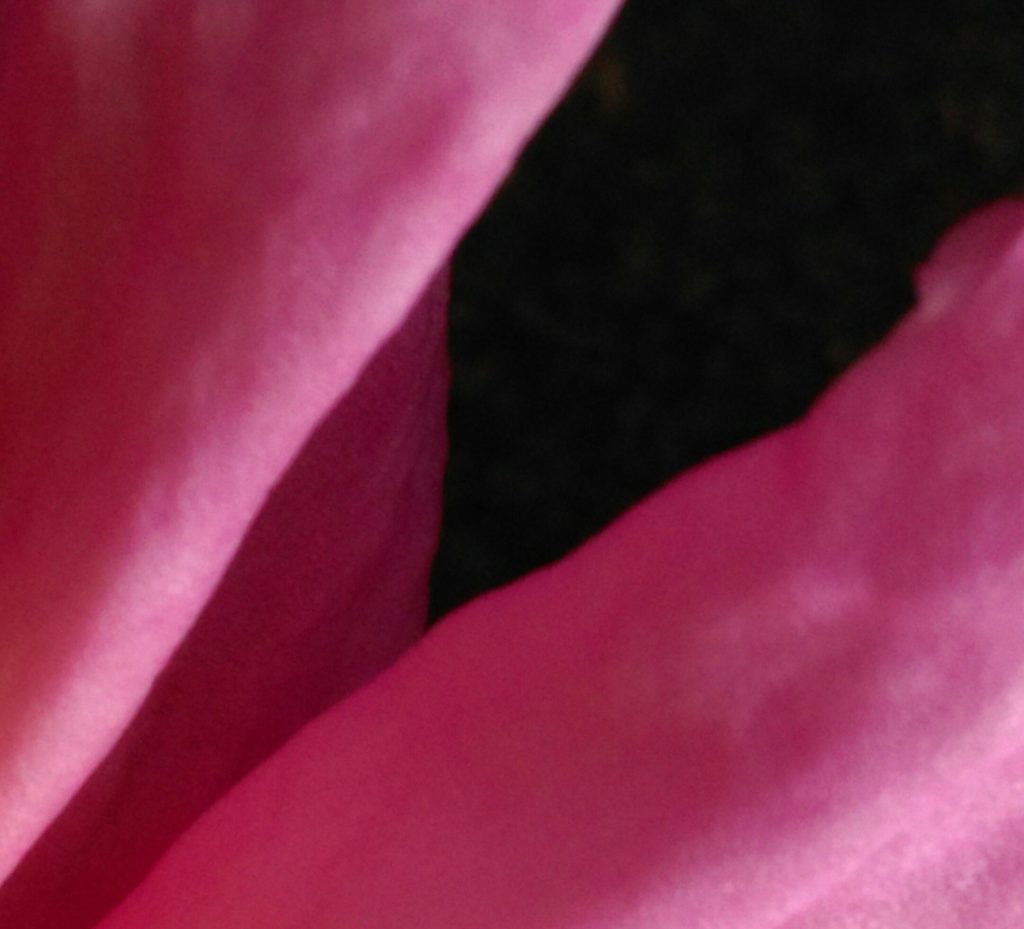
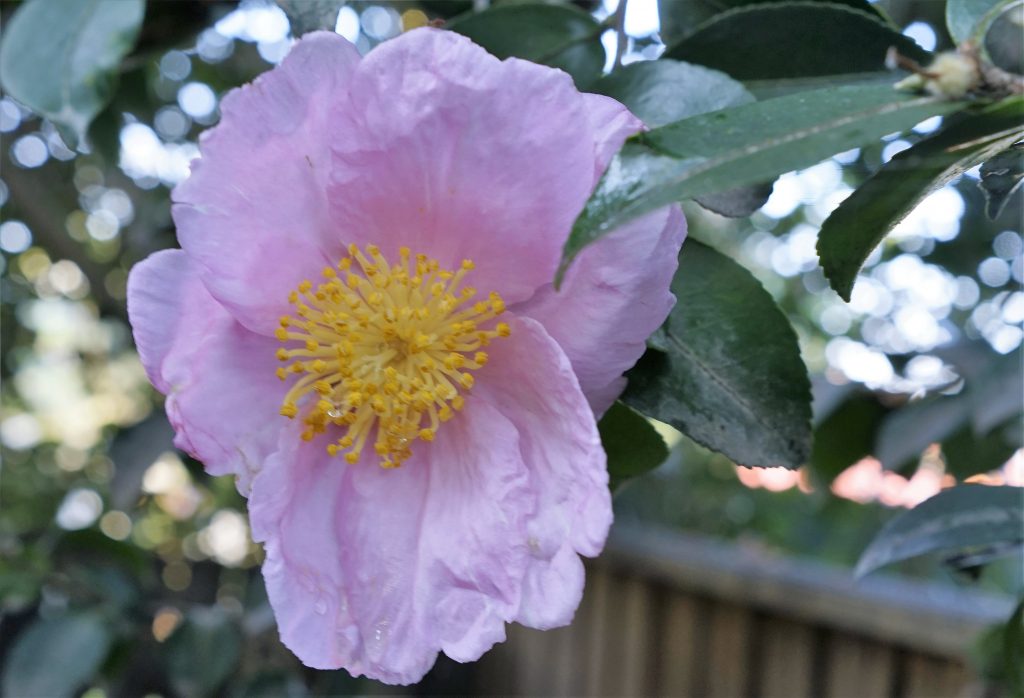
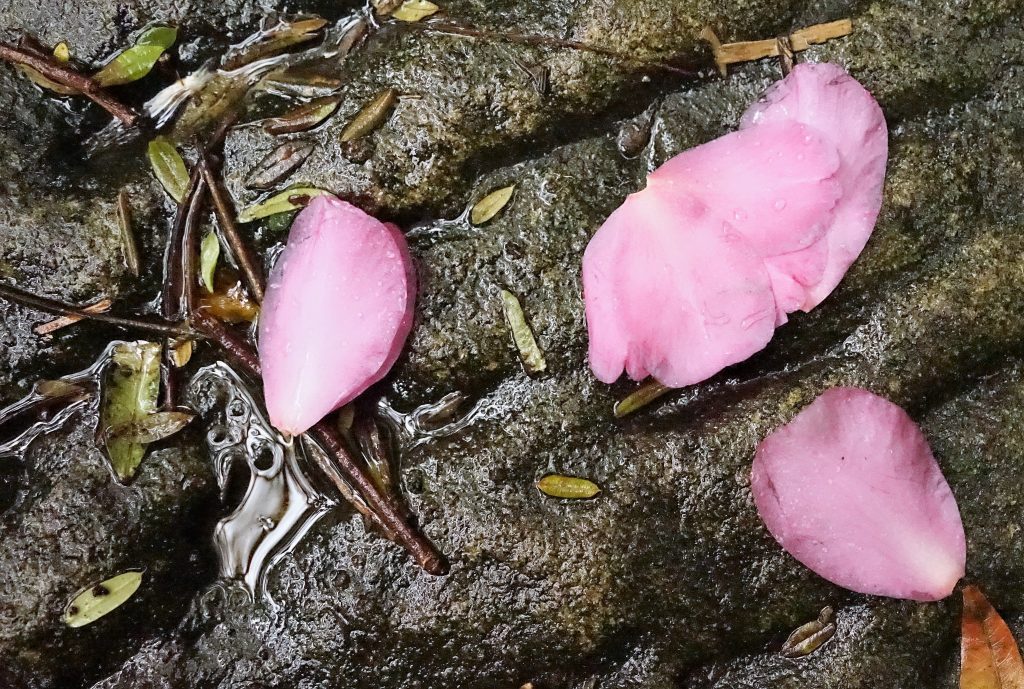
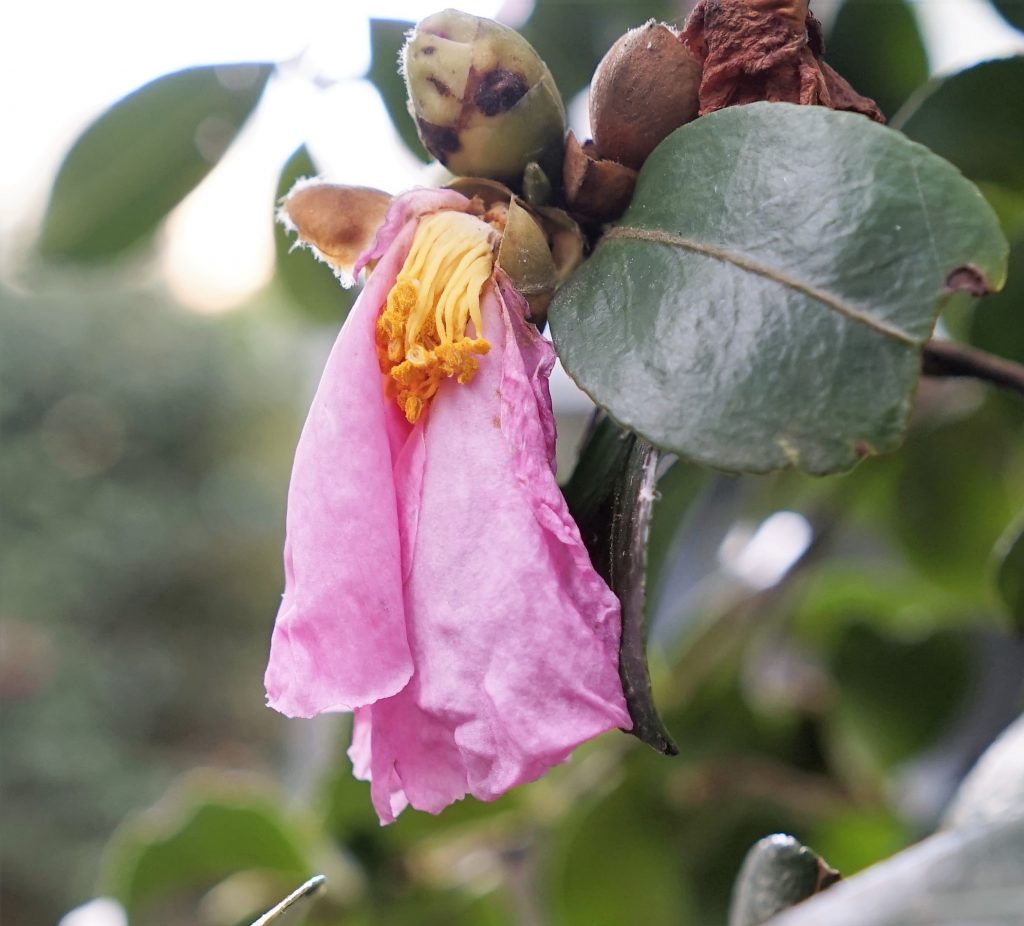
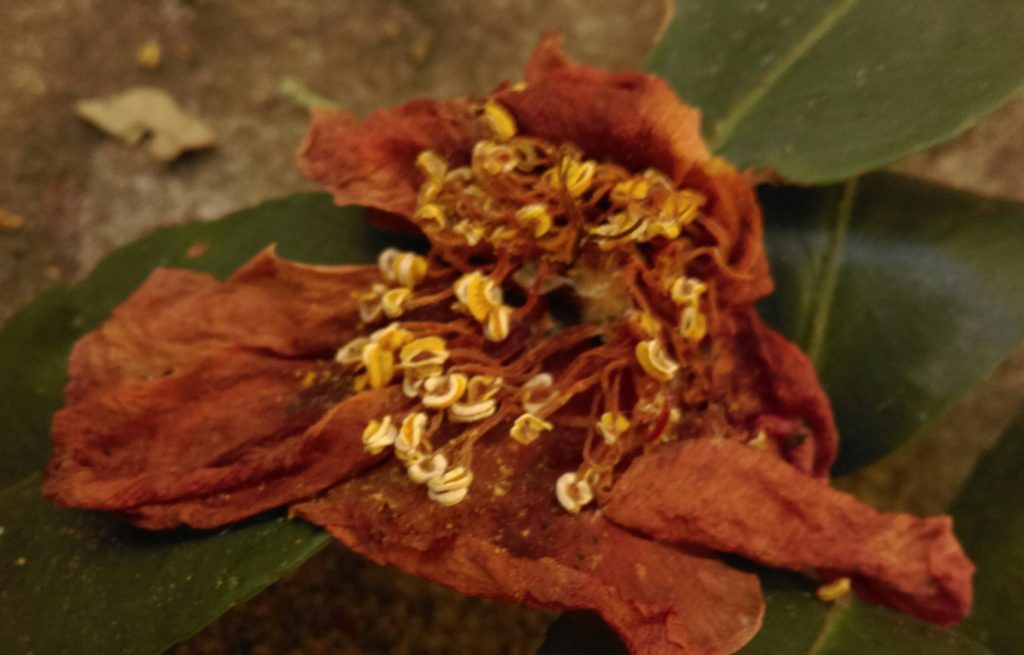
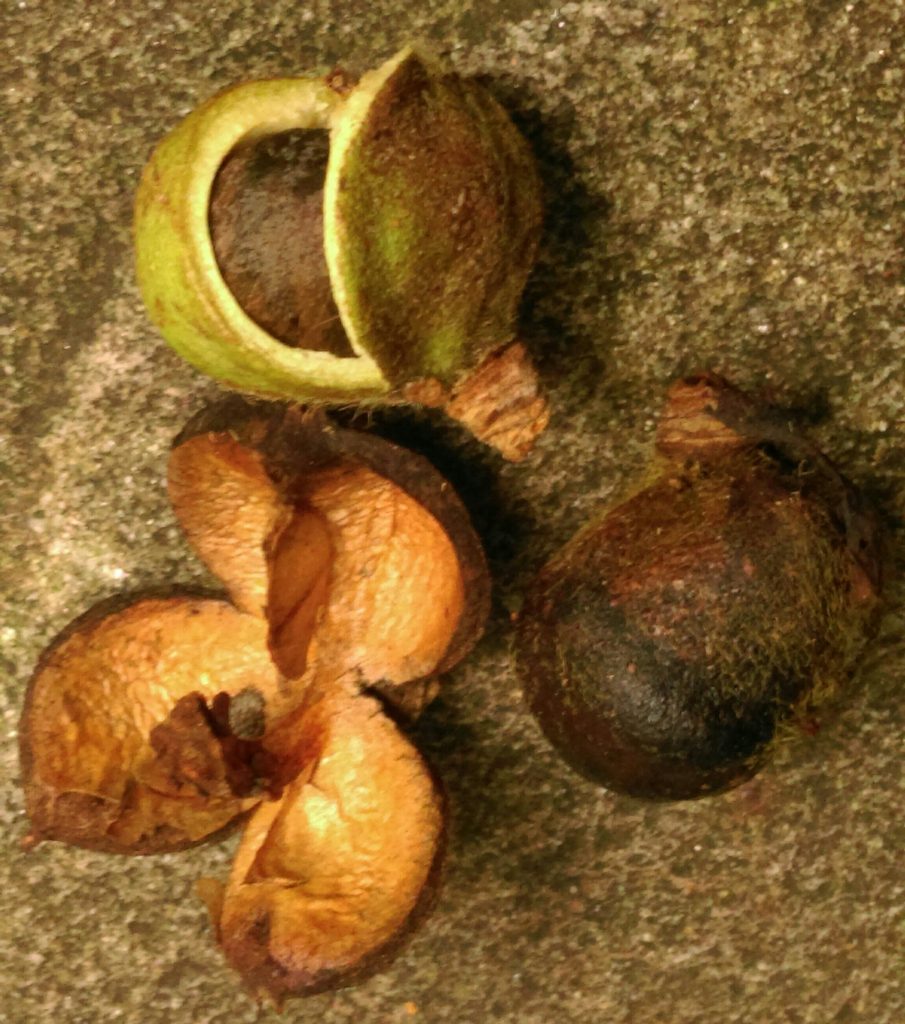
I like your use of multiple photos to show different views and the illustrated progression of time in this part of the garden.
Stunning pictures! Poetically arranged to signify the natural life-death-life cycle …